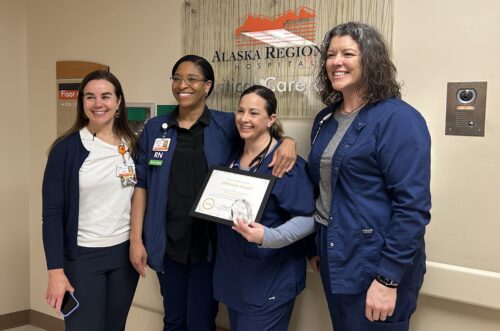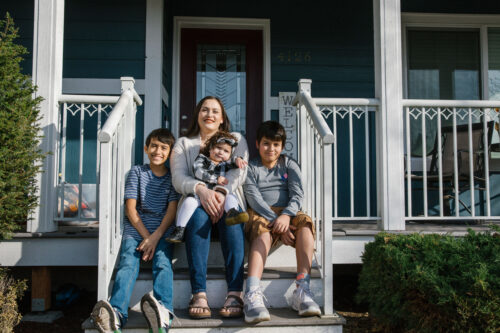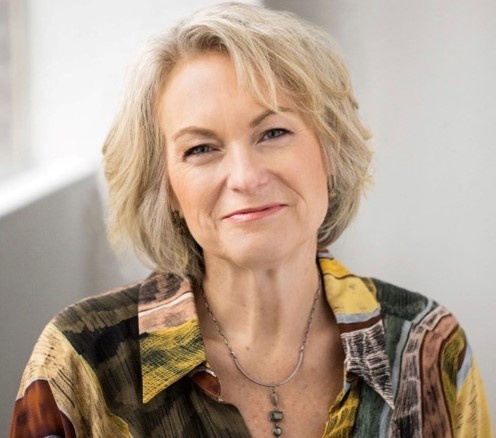
What does organ and tissue donation mean to you?
I view organ and tissue donation as the greatest gift we can give another individual. Many organ donors come from a personal tragedy. Being able to help turn that tragedy into something positive is wonderful. Knowing that someone else’s life can be improved or extended from an unexpected passing brings our families and caregivers comfort and peace. A friend of mine just lost her mother. She had been on the waiting list for lungs for over a year. There are so many individuals that would benefit from organ donation. We need to continue the efforts to educate and encourage organ donors.
Why has your donation program been so successful and what drives you to make donation a priority in your hospital?
Organ donation has always been embraced by the staff at Providence Alaska Medical Center (PAMC). It goes to what I said earlier about having something good come out of something tragic. Our providers, nursing staff, OR partners and family support coordinators work together to make our program as successful as it can be. Our partners at LifeCenter have been wonderful about providing us support, education and feedback on not only our processes, but on our outcomes. We love getting the stories about how lives have been impacted through our donors. These letters are shared throughout our organization with our caregivers.
Key point: Creating a positive culture around donation by involving care staff in implementing process improvement and sharing stories about the positive impact of organ donation can help create strong donation experiences for all involved.
What makes you most proud of working at your hospital and why?
I’m very proud of our staff and how they support the potential donor family and donor. Our intensive care providers and staff also work hard to support each other. When an adult life is interrupted unexpectedly, it’s very difficult. When it happens to a child, it’s even harder.
In 2015, the PAMC Respiratory Therapy Team won the LifeCenter Donation Innovation Award for developing a protocol that helped to improve the viability of lungs being transplanted. We have OR staff that come in to assist with organ retrieval at all hours of the night. They do it willingly and with a giving heart because they know how precious these organs are and what it means to an individual on the waiting list. In 2016, our “Wall of Heroes” became a reality. This was a result of collaborating with Todd Seiger (thank you for planting the seed), the Alaska Foundation for funding, and Life Alaska Donor Services and LifeCenter Northwest for reaching out to our organ/tissue donor families to provide stories and photos. The “Wall of Heroes” is located in our main hospital lobby. We are humbled and privileged to pay tribute to our Alaskan donors and organ recipients. Our hope is that this display raises awareness about organ donation and inspires others to become an organ donor. We also celebrate our organ donors by doing a flag raising for any interested family.
Lastly, we started a placental donation program in 2017. This program actually allows a live donor to donate their birth tissue for use in difficulty or slow-healing wounds, eye injuries, dental injuries, burns and diabetic ulcers.
Key note: There are many ways in which to celebrate organ donation and honor donors in the hospital. Some hospitals choose to do raise the donate life flag or implement a wall of heroes, while others ring a bell after each recovery or implement the Walk of Honor when the family authorizes. For help implementing a program, contact your hospital development program manager.
What’s unique about healthcare in your region?
Alaska is a large, majestic state and with that come the challenges of providing care to many remote villages. PAMC serves as the tertiary referral hospital for the state, so we consistently receive patients from our remote locations. Our geographical location can be challenging simply because of the time it takes to reach the lower 48. Alaska is very diversified, with over 93 languages spoken in Anchorage homes. Our most frequent foreign languages at PAMC include Spanish, Hmong, Korean, and Tagolog.
What do you love about living in your city/region?
I love the beauty of this state. It is awe inspiring and so majestic it can take one’s breath away. The city of Anchorage has many bike trails and is home to large numbers of wildlife. It’s not uncommon to see a moose or a bear when you are out walking/biking or hiking. Anchorage is home to our performing arts center and many museums giving us access to “city life” with a close proximity to the Alaskan wilderness.





